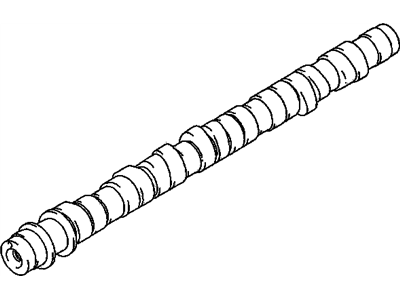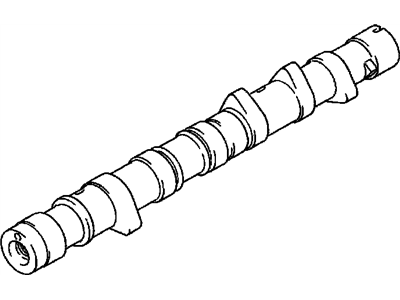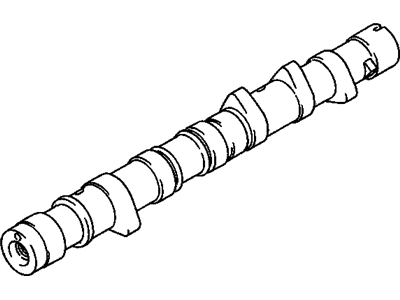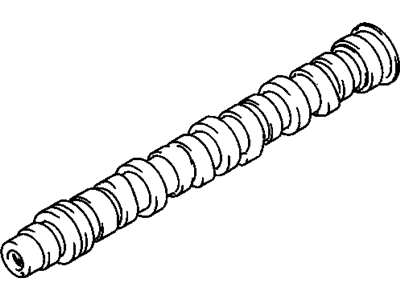
My Garage
My Account
Cart
Genuine Chevrolet Metro Camshaft
Cam- Select Vehicle by Model
- Select Vehicle by VIN
Select Vehicle by Model
orMake
Model
Year
Select Vehicle by VIN
For the most accurate results, select vehicle by your VIN (Vehicle Identification Number).
4 Camshafts found
Chevrolet Metro Camshaft
The camshaft of the Chevrolet Metro is important for the controlling of the intake and exhaust valves through the admission of the air/fuel blend and the discharge of exhaust products. Usual camshaft material is iron or steel and the it works in different ways like Over Head Valve (OHV), Single Over Head Cam (SOHC) and the latest Double Over Head Cam (DOHC) types. Each one of them has different impact on the way the engine works, whereas DOHC configuration enables individual manipulations with the intake and exhaust valves. The camshaft in Chevrolets Metro is operated by the crankshaft thus ensuring accuracy in the functioning of the valves. Camshafts for performance can improve power and efficiency by increasing lift and duration, whereas other factors, such as LSA, have an impact on torque or improve the idling quality. In all, the camshaft is significant in influencing many aspects of the Chevrolet Metro's engine including fuel economy and power.
Each OEM Chevrolet Metro Camshaft we offer is competitively priced and comes with the assurance of the manufacturer's warranty for the part. Furthermore, we guarantee the speedy delivery of your orders right to your doorstep. Our hassle-free return policy is also in place for your peace of mind.
Chevrolet Metro Camshaft Parts Questions & Experts Answers
- Q: How to remove and reinstall rocker arms and Camshaft on Chevrolet Metro?A:The rocker arms and shafts are accessed by first, turning off the car's battery's negative terminal, second, positioning the number one piston at the top dead center and third, removing the valve cover. Wrench the lock nuts and turn the valve adjustment screws, counter clockwise till they do not come in contact with the valves. Lose the eight screws used to secure the rocker arm shafts, these will most likely be very tight and you might have to use an impact screwdriver. Rocker arm numbers start at number one at the Timing Belt side proceeding toward the rear in an alternating pattern so that the intake side is numbered 1, 3, and 5 while the exhaust is numbered 2, 4, and 6. Shove up on the rear of one rocker arm shaft, so you can get some purchase on it with your plier and slowly pull both the rocker arm shafts out of the front of the engine, lifting the rocker arms and springs out of the head as they come off the rocker arm shaft. Subsequently, the timing belt, cam sprocket and the inner timing belt cover would be eradicated together with the distributor and fuel pump. Take out the air injection tube and unscrew the distributor case, now ease the camshaft from the Cylinder Head, be careful not to mar the bearings. Wipe all the parts in solvent as well as the use of lint free cloth so as to ensure that they are clean. By measures the inside diameter of each rocker arm and the outside diameter of the shaft where the rocker arm rides and compared with the specifications. For wear and signs of damage on the camshaft, the rocker arms and the springs, replace any heavily worn items. Check the height of the cam lobe and take a comparison of the figure thus obtained with the standard figure located on the specifications of the camshaft; if the height of the cam lobe is below the minimum then the camshaft must be changed. Check the size of each bearing journal and compare with standard size, inspect the camshaft and replace it if the journals are bad or spoiled. Insert a bore gauge in to the camshaft bearing bores and record the measurement and thereby calculate the bearing clearance. There will be severe cases where a new cylinder head will be required if the oil clearance is too high. For installation of camshaft apply engine assembly lube or moly-base grease on the camshaft bearing journals and lobes and then in the head. Squirrel the same material to the grooves of the rocker arm and slowly place a shaft of the rocker arm into the cylinder head in order to ensure that the rocker arms are placed back to their positions appropriately and that the shafts are rightly positioned. It is recommended that after the component has been located proceeding to fix the retaining screws then followed by tightening the heads of the screws according to the torque limit with rotation of the heads in such a way that the holes in the head of the screw align with the holes in the component. Last of all, place the rest of the components in the reverse order of which they were removed and then set the valves properly.















